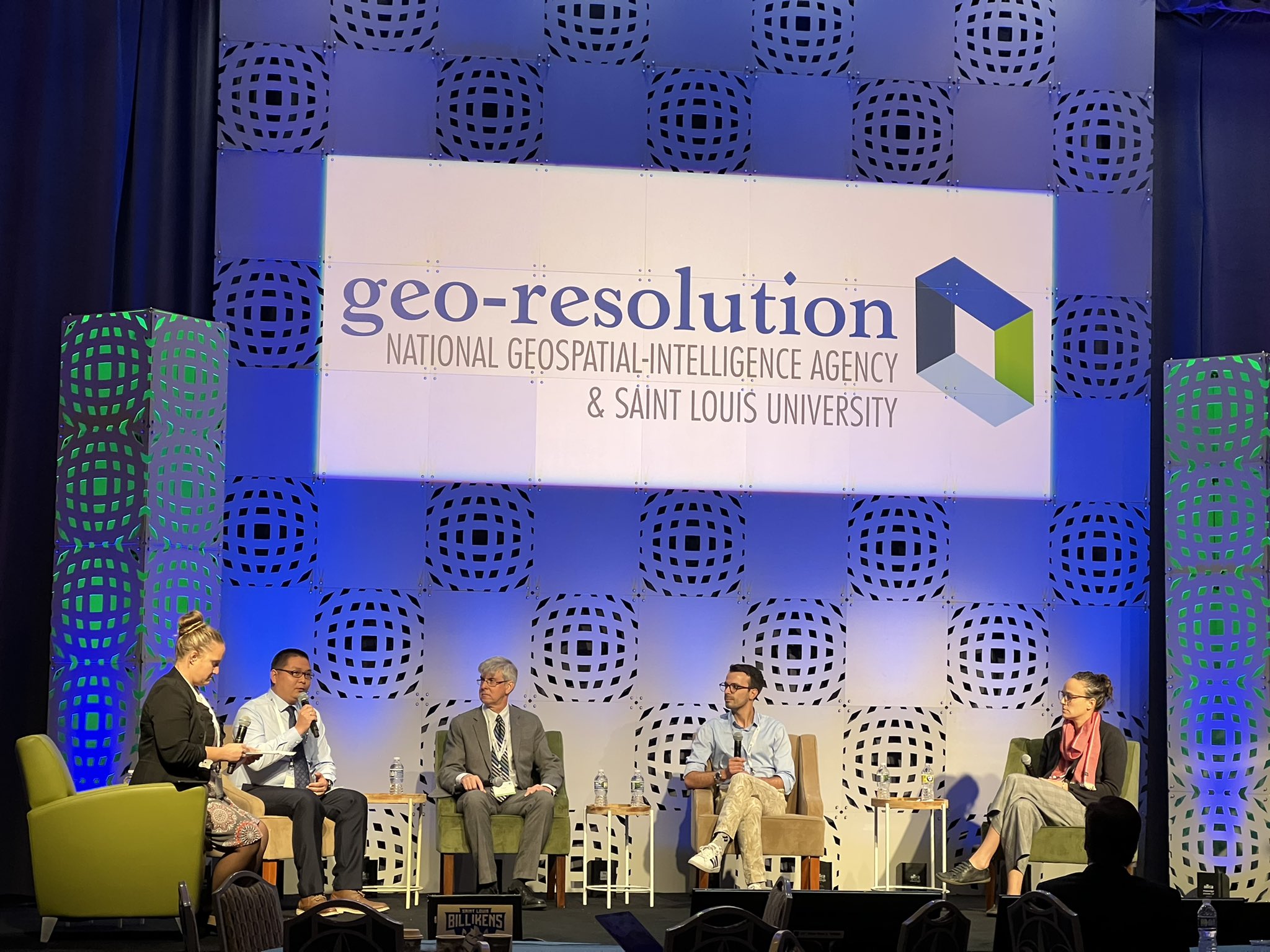
Geospatial Perspectives on Climate Change: Predicting and Mitigating Effects
Shuai Zhou was invited to a panel discussion at Geo-Resolution 2022 to discuss the issues of migration due to climate change.
--
Shuai Zhou (Ph.D. candidate in Rural Sociology and Demography) was invited to speak in a panel discussion on “Migration due to Climate Change” at the Geo-Resolution 2022 conference themed on Geospatial Perspectives on Climate Change: Predicting and Mitigating Effects. The conference was held on September 28, 2022, at Saint Louis University with audiences coming from academia, government, and industry.
Climate change has been increasingly influencing the human population, particularly people’s migration patterns. Experts predicted that by 2050, there will be around 150-300 million people displaced because of climate change. The panel discussion focused on epistemology around environmental migration, particularly on how to define and measure environmental migration and study environmental migration using the currently available data.
Zhou argued that traditional theoretical frameworks, especially those from economists such as neoclassical economics and the new economics of labor migration, are not enough to explore the environment-migration relationship since they focused primarily on economic factors while treating environmental factors as contextual characteristics that need to be controlled for in their empirical models. The social-ecological theory, a theoretical framework that couples migration system theory and ecological perspectives, is better suited to inquiring about the environmental impacts on migration.
Zhou also provided three approaches that could empirically establish an environment-migration relationship. First, if a climate disaster occurs, researchers can survey people from the affected area and measure their migratory responses, therefore establishing the relationship between climate change and migration and exploring the impact of such climate change on migration. Second, researchers can use aggregate data such as county-level migration data and link those migration data to environmental measures such as temperature, precipitation, air quality, and natural amenity, then use different modeling strategies such as multivariate, multilevel, or spatial models to establish the environment-migration relationship. Third, researchers can also employ agent-based modeling techniques to predict environmental migration in the future based on empirically derived rules (e.g., the directions and magnitudes of certain environmental factors’ impact on migration) from the currently available data.
Please visit the link for detailed information: https://taylorgeospatial.org/georesolution/